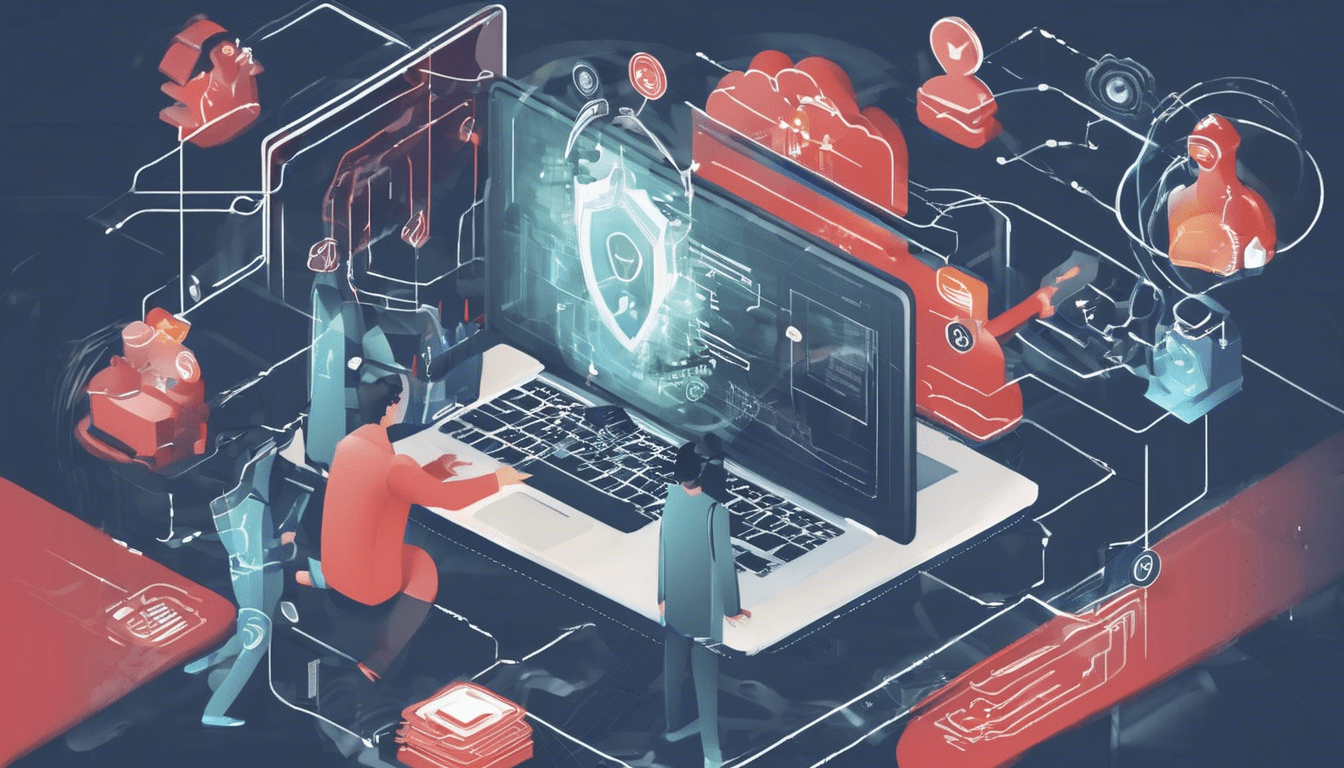Product Lifecycle Management (PLM) strengthens cyber resilience by maintaining control over product data and processes throughout every stage—from concept to disposal. This continuous oversight helps identify vulnerabilities early, enforce consistent security measures, and respond swiftly to emerging threats, ensuring products remain secure amid growing cyber risks. Integrating PLM with cybersecurity strategies creates a more robust, adaptive defence across the entire product journey.
Understanding Product Lifecycle Management and Its Role in Cyber Resilience
Product Lifecycle Management (PLM) provides a structured, end-to-end approach for navigating a product’s journey—from initial concept to end-of-life retirement—while deeply integrating security and compliance throughout. More information here.
Have you seen this : What role does blockchain play in UK tech advancements?
PLM unites cross-departmental collaboration, integrating research, engineering, marketing, sales, support, and supply chain management into a centralized data architecture. This connected framework is essential for orchestrating the complex choreography of stages: concept development, design and prototyping, manufacturing, market introduction, customer service, and eventual disposal. Each phase presents unique data management and security demands, addressed through PLM’s standardized processes and secure data environments.
Security and risk management are woven into the fabric of a robust PLM system. Leading organizations embed cybersecurity controls—ranging from secure product design protocols to compliance tracking—directly within their lifecycle platforms. This means that from the earliest design choices to supply chain documentation and end-of-life procedures, organizations can monitor, remediate, and document vulnerabilities, thereby reducing exposure to digital threats and regulatory penalties.
Have you seen this : Unlock sustainability with effective plm software solutions
With AI, IoT, and real-time analytics now central to advanced PLM, continuous monitoring and adaptive security practices become accessible even for agile teams. This isn’t just a technical requirement, but a vital enabler of holistic risk management and sustainable business operations.
Enhancing Security Through Every Stage of the Product Lifecycle
Security considerations and common vulnerabilities in each lifecycle stage
Lifecycle stages explanation is foundational for identifying cybersecurity risks. During concept and design phases, insufficient threat modeling can leave products open to exploitation. In production, poorly managed access or weak lifecycle documentation management may enable unauthorized changes. When a product moves into support and retirement, data exposure often results from overlooked lifecycle documentation management or gaps in lifecycle compliance and standards. Addressing these issues effectively calls for comprehensive lifecycle risk management across all phases.
Integrating cybersecurity requirements and compliance into PLM processes
Incorporating cybersecurity from the outset ensures robust lifecycle compliance and standards adherence. Embedding controls within design documentation using product data management tools helps teams maintain secure-by-design principles. Automated workflows assist in applying and validating lifecycle compliance and standards with minimal manual intervention, reducing the risk of compliance drift.
Leveraging PLM tools for traceability, documentation, and audit capabilities
Product data management tools and lifecycle documentation management support not only traceability but also efficient audit readiness. Lifecycle reporting and dashboards provide real-time insights into compliance status and security incidents, promoting transparency across all lifecycle stages. With these tools, organizations streamline lifecycle risk management and strengthen security posture at every phase.
PLM Technology and Best Practices for Secure Product Development
Overview and Comparison of Leading PLM Platforms Focusing on Security Features
Utilizing product data management tools within the best PLM platforms guarantees data traceability and lifecycle compliance—foundational for regulated industries. Cloud-based lifecycle solutions facilitate centralized oversight, enabling organizations to implement and monitor robust access controls. Integration with ERP systems augments lifecycle performance monitoring by consolidating supply chain and production data, strengthening data security across functions. These best PLM platforms commonly offer granular user permissions, real-time audit trails, and automated alerts for unauthorized modifications.
Best Practices for Integrating Cybersecurity and PLM in Business Workflows
Combining PLM software with lifecycle process optimization involves embedding lifecycle software scalability and proactive lifecycle risk management at every stage. Emphasizing product lifecycle best practices—such as early threat modeling and continuous lifecycle performance monitoring—helps protect intellectual property from emerging cyber risks. Proactive integration with cloud-based lifecycle solutions and ERP systems ensures that updates in one system reflect everywhere, supporting compliance and resilience.
The Role of AI, IoT, and Automation in Strengthening Product Lifecycle Security
Lifecycle enhancement with AI delivers predictive analytics for anomaly detection and compliance tracking, allowing manufacturers to respond quickly to threats. IoT integration provides real-time product lifecycle analytics, while product lifecycle automation benefits streamline routine updates and configuration changes. These advances reinforce lifecycle software scalability, letting organizations adapt their product lifecycle security posture as business needs shift.
Future Trends: Evolving PLM for Robust Cybersecurity and Business Success
The impact of digital transformation on lifecycle security and management
Digital transformation in lifecycle management is reshaping how products are designed, monitored, and protected. As organizations digitize development processes, lifecycle innovation management becomes essential, particularly for securing data exchanges and enhancing lifecycle compliance and standards. By automating security requirements within digital workflows, businesses gain stronger audit trails and real-time lifecycle knowledge management, preparing them to address vulnerabilities at every stage.
Emerging trends: digital twins, connected supply chains, and sustainability
Increased adoption of digital twins brings sharper lifecycle customer experience improvement and lifecycle sustainability practices. These virtual models, linked through IoT, allow teams to gather insights from product performance and integrate lifecycle customer feedback integration directly into future iterations. Connected supply chains amplify product oversight and enable prompt lifecycle issue tracking aligned with lifecycle compliance and standards, safeguarding against external threats and supply chain disruptions.
Building organisational culture for ongoing cyber resilience through PLM integration
Embedding cybersecurity into the lifecycle innovation management process fosters a culture of resilience. Effective lifecycle knowledge management promotes prompt response to threats, closes feedback loops, and enhances lifecycle customer experience improvement. Ongoing training and clear lifecycle compliance and standards protocols help teams maintain best practices—reinforcing the company’s proactive stance on lifecycle sustainability practices and robust data protection.




